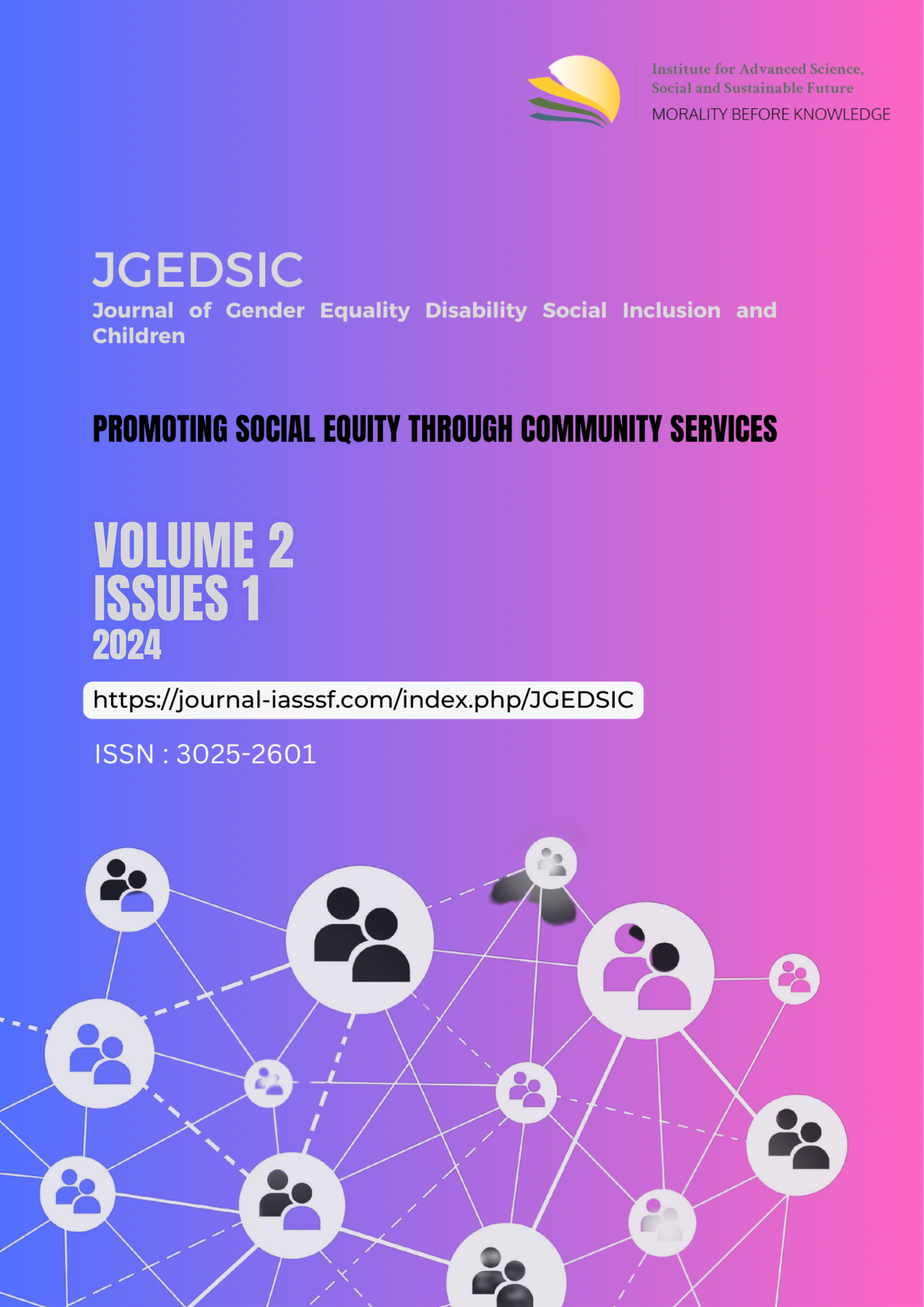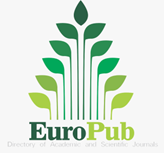Implementation of bureaucratic reforms to support public services for disabled groups in Central Java
DOI:
https://doi.org/10.61511/jgedsic.v2i1.2024.825Keywords:
reform, bureaucratic disability, public services, service quality, service standardsAbstract
Background: This research aims to conduct a study of the implementation of bureaucratic reform related to public services, especially the disability group. Bureaucratic reform is aimed at making changes both in terms of institutional aspects, governance, human resources and legal regulations to realize a bureaucratic agenda that improves the welfare of the disabled community. One of the agendas for implementing bureaucratic reform is to improve the quality of public services. Public services for people with disabilities are one manifestation of state services to meet their needs which have been neglected. Currently, the quality of public services is felt to be unsatisfactory with many complaints about the quality of public services provided by local governments and institutional ministries for people with disabilities. Improving the quality of public services is carried out by synchronizing various aspects by improving the quality of implementing apparatus and forming adaptive organizations so that they can produce innovation to anticipate developments in the needs of marginalized groups. Methods: The method used in this research is to conduct a literature review and analyze secondary data, both quantitative and qualitative, obtained from previous research or from documentation or publications. Findings: From the results of the analysis, it is found that implementing bureaucratic reform is the best way to improve the quality of public services which can not only serve current conditions but can also adapt to developmental needs which results in public service innovation. Conclusion: This research also found that the quality received by disability groups was still low. Novelty/Originality of this Study: Its examination of bureaucratic reforms specifically aimed at enhancing public services for disabled groups in Central Java uniquely addresses the intersection of governance, institutional changes, and the specific needs of marginalized groups. Additionally, it emphasizes adaptive organizations and service innovation to improve accessibility and inclusivity.
References
Abbas, F., & Sadat. A. (2020). Model Pelayanan Publik terhadap Reformasi Birokrasi. JSIP: Jurnal studi Ilmu Pemerintahan, Volume 1, (1), 1689-1699. https://doi.org/10.35326/jsip.v1i1.525
Aisyah, S. (2015). Implementasi Kebijakan Aksesibilitas Pelayanan bagi Difabel di Yogyakarta Tahun 2015 (Studi Kasus: Grhatama Pustaka Yogyakarta). Yogyakarta: FISIP, Universitas Muhammadiyah Yogyakarta. http://repository.umy.ac.id/handle/123456789/11852
Admin. (2017, July 20). Launching Pusat Studi Layanan Disabilitas. Official Sites Direktorat Riset. https://drpm.uny.ac.id/berita/launching-pusat-studi-layanan-disabilitas.html
Albrecht, K., & Zemke, R. (1985). Service America!: Doing Business in the New Economy. Irwin Professional.
Coleman, J. S. (2008). Dasar-Dasar Teori Sosial. Nusa Media.
Christensen, T., Lægreid, P. (2011). Complexity and Hybrid Public Administration—Theoretical and Empirical Challenges. Public Organization Review, 11, 407–423. https://doi.org/10.1007/s11115-010-0141-4
Daraba, D. (2019). Reformasi Birokrasi dan Pelayanan Publik. https://eprints.unm.ac.id/12083/
Dewang, N., & Leonardo, L. (2010). Aksesibilitas ruang terbuka publik bagi kelompok masyarakat tertentu studi fasilitas publik bagi kaum difabel di kawasan Taman Suropati Menteng-Jakarta Pusat. Planesa, 1(1), 213267. https://ejurnal.esaunggul.ac.id/index.php/planesa/article/view/508
Dwiyanto, A. (2021). Reformasi Birokrasi Publik di Indonesia. UGM Press.
Hardiyansyah. (2011). Kualitas Pelayanan Publik. Gava Media.
Hardiyansyah, H. (2015). Komunikasi Pelayanan Publik Konsep dan Aplikasi. https://eprints.binadarma.ac.id/2679/
Holidin, D., Hariyati, D., & Sunarti, E. S. (2017). Reformasi Birokrasi dalam Transisi. Kencana.
Jocelyne. (2011). A New Synthesis of Public Administration: Serving in the 21st Century. Mc Gill Queen's University Press.
Johan P. Olsen. (2006). Maybe It Is Time to Rediscover Bureaucracy. Journal of Public Administration Research and Theory, 16(1), 1–24, https://doi.org/10.1093/jopart/mui027
Khasnabis, C., Heinicke Motsch, K., Achu, K., Al Jubah, K., Brodtkorb, S., Chervin, P., Coleridge, P., Davies, M., Deepak, S., Eklindh, K., Goerdt, A., Greer, C., Heinicke-Motsch, K., Hooper, D., Ilagan, V. B., Jessup, N., Khasnabis, C., Mulligan, D., Murray, B., Officer, A., … Lander, T. (Eds.). (2010). Community-Based Rehabilitation: CBR Guidelines. World Health Organization.
Kumorotomo, W. (Ed.). (2009). Governance Reform di Indonesia: Mencari arah kelembagaan politik yang demokratis dan birokrasi yang profesional. Gava Media.
Meier, Kenneth J., and Gregory C. Hill. (2009). Bureaucracy in the Twenty-First Century, in Ewan Ferlie, Laurence E. Lynn, and Christopher Pollitt (eds), The Oxford Handbook of Public Management. https://doi.org/10.1093/oxfordhb/9780199226443.003.0004
Moleong, L. J. (2009). Metodologi Penelitian Kualitatif. Remaja Rosdakarya.
Moenir, A. S. (2008). Manajemen Pelayanan Umum di Indonesia. Bumi Aksara.
Moriña, A. (2016). Inclusive education in higher education: challenges and opportunities. European Journal of Special Needs Education, 32(1), 3–17. https://doi.org/10.1080/08856257.2016.1254964
Nisa, I. C. (2017). Aksesibilitas Pada Fasilitas Pendidikan Sekolah Luar Biasa Untuk Tunanetra di Banyuwangi (Doctoral dissertation, Universitas Brawijaya). https://repository.ub.ac.id/id/eprint/7763/
Perry, J. L., Mesch, D., & Paarlberg, L. (2006). Motivating Employees in a New Governance Era: The Performance Paradigm Revisited. Public Administration Review, 66(4), 505–514. http://www.jstor.org/stable/3843936
Prabowo, J. W., Leung, P., & Guthrie, J. (2017), Reforms in public sector accounting and budgeting in Indonesia (2003-2015): confusions in implementation. Journal of Public Budgeting, Accounting & Financial Management, 29(1), 104-137. https://doi.org/10.1108/JPBAFM-29-01-2017-B005
Priestley, M., Waddington, L., & Bessozi, C. (2010). Towards an agenda for disability research in Europe: learning from disabled people’s organisations. Disability & Society, 25(6), 731–746. https://doi.org/10.1080/09687599.2010.505749
Putri, N. A. D. (2016). Dinamika Reformasi Birokrasi Indonesia. Jurnal Ilmu Pemerintahan, 1(1), 161-191. https://ojs.umrah.ac.id/index.php/kemudi
Robbins, P. S., & Molan, B. (2008). Perilaku Organisasi. Salemba Empat.
Shogren, K. A., Luckasson, R., & Schalock, R. L. (2015). Using Context as an Integrative Framework to Align Policy Goals, Supports, and Outcomes in Intellectual Disability. Intellectual and developmental disabilities, 53(5), 367–376. https://doi.org/10.1352/1934-9556-53.5.367
Susanti, G., & Rifany, R. (2020). Public Service Bureaucratic Reform: A Case Study on Coordination in One Stop Services (KPTSP) in Takalar Regency. Publik (Jurnal Ilmu Administrasi), 9(2),125. https://doi.org/10.31314/pjia.9.2.125-131.2020
Turner, M., Prasojo, E., & Sumarwono, R. (2019). The challenge of reforming big bureaucracy in Indonesia. Policy Studies, 43(2), 333–351. https://doi.org/10.1080/01442872.2019.1708301
Ubaedillah, A., & Rozak, A. (2006). Demokrasi Hak Asasi Manusia dan Masyarakat Madani. Edisi Revisi. Jakarta: ICCE bekerja sama dengan UIN Syarif Hidayatullah Jakarta. https://repository.uinjkt.ac.id
Winarno, B. (2004). Kebijakan Publik Teori dan Proses, Cetakan Kedua. Media Pressindo.
Downloads
Published
How to Cite
Issue
Section
Citation Check
License
Copyright (c) 2024 Journal of Gender Equality Disability Social Inclusion and Children

This work is licensed under a Creative Commons Attribution 4.0 International License.

















